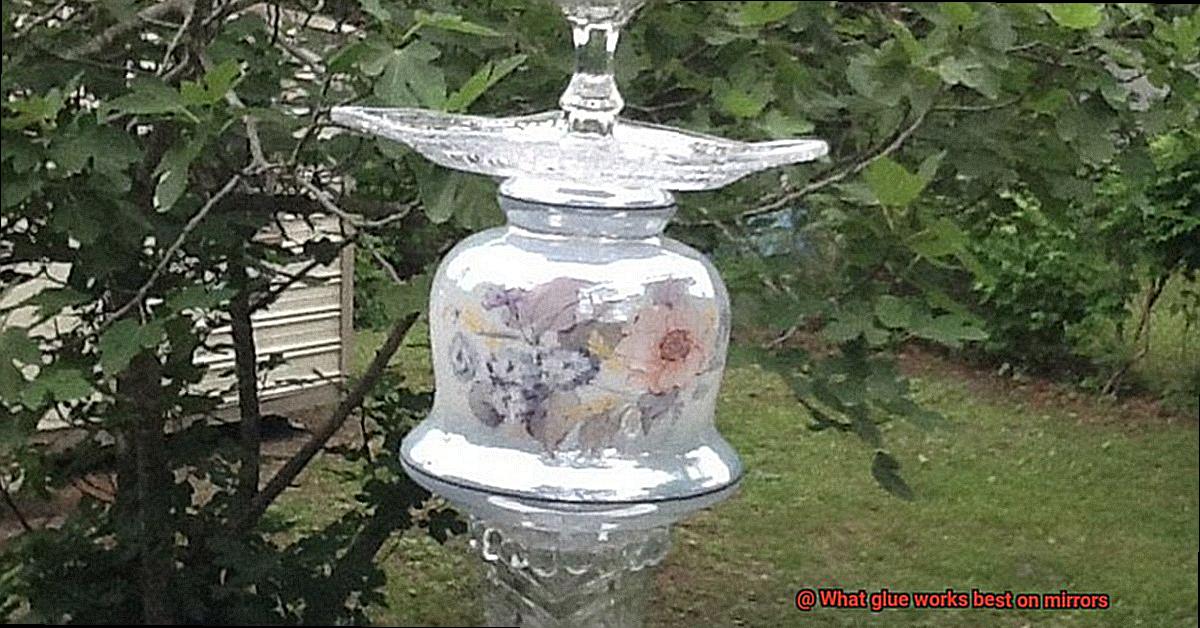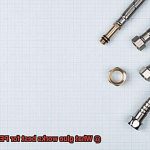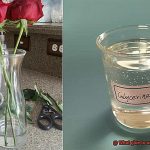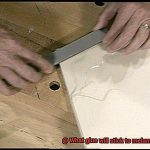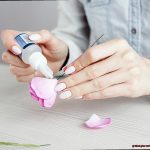Mirrors have a magical quality, adding elegance and charm to any space they grace. Whether you’re hanging a mirror as a decorative accent or installing one to bring more light and depth into a room, keeping it securely in place is crucial. And that’s where the right adhesive comes in.
In this blog post, we’re going on an adventure through the world of glues and adhesives, uncovering the best options specifically designed for bonding mirrors. We’ll dive deep into the characteristics of different adhesive types, shining a light on their strengths and weaknesses when it comes to sticking mirrors. So, get ready to discover the wonders of adhesives that will keep your mirrors perfectly positioned.
Join us as we demystify silicone-based adhesives, construction adhesive, mirror mastic, and the ever-popular epoxy glue. We’ll reveal their secrets for ensuring mirror adhesion while considering crucial factors like flexibility, durability, and ease of use.
With expert guidance at your fingertips, you’ll be well-equipped to choose the ideal adhesive for your mirror project. Say goodbye to worries about slipping mirrors or unexpected peel-offs, and say hello to secure installations that stand the test of time.
Stay tuned for our upcoming blog posts where we’ll delve even deeper into each adhesive type’s nitty-gritty details. We’ll provide step-by-step instructions for successful mirror bonding and address common challenges you may encounter along the way.

Whether you’re a professional interior decorator or a DIY enthusiast, our guide aims to bridge the gap in adhesive knowledge. By arming yourself with the right glue for your mirror installation needs, you can make your reflection shine while ensuring your mirror’s beauty lasts.
So, buckle up and prepare to explore an exciting world of adhesive options tailored just for your mirror bonding adventures. Let’s dive into this informative journey together.
What Glue Should Be Used for Mirrors?
Contents
- 1 What Glue Should Be Used for Mirrors?
- 2 Advantages of Silicone-Based Adhesive
- 3 Mirror Mastic: The Professional Choice
- 4 Epoxy Adhesives: High Strength and Durability
- 5 Considerations for Different Surfaces
- 6 Cleaning the Surface Before Applying Glue
- 7 Following Manufacturer’s Instructions for Application and Curing Times
- 8 Safety Precautions When Working with Adhesives
- 9 Conclusion
Mirrors serve as both functional and decorative elements in our living spaces, adding beauty and dimension. Whether you’re installing a new mirror or fixing a broken one, choosing the right glue is crucial for a secure and long-lasting bond.
This comprehensive guide delves into the different types of adhesives suitable for mirrors, offering valuable tips for achieving optimal results.
Mirror Adhesive/Mirror Mastic:
For a reliable bond, experts recommend high-quality mirror adhesive or mirror mastic. These specialized adhesives are formulated to bond mirrors to various surfaces like glass, wood, or metal. Boasting excellent adhesion and flexibility, they withstand moisture and temperature changes. Mirror mastic, in particular, stands out with its silicone-based formulation that prevents black spots or discoloration on the mirror’s reflective surface.
Construction Adhesive:
Liquid nails or heavy-duty construction adhesives are also popular choices for gluing mirrors. Known for their strong bonding properties and compatibility with different materials, they offer versatility. However, it’s vital to select an adhesive specifically labeled for use with mirrors to ensure maximum performance.
Clear Epoxy/Two-Part Epoxy:
Clear epoxy or two-part epoxy adhesives are renowned for their exceptional strength and durability. Though they require careful handling and preparation, these adhesives create a reliable bond for mirrors. Ensure precise adherence to the manufacturer’s instructions, as they often involve mixing and limited working times.
Avoid Household Glues:
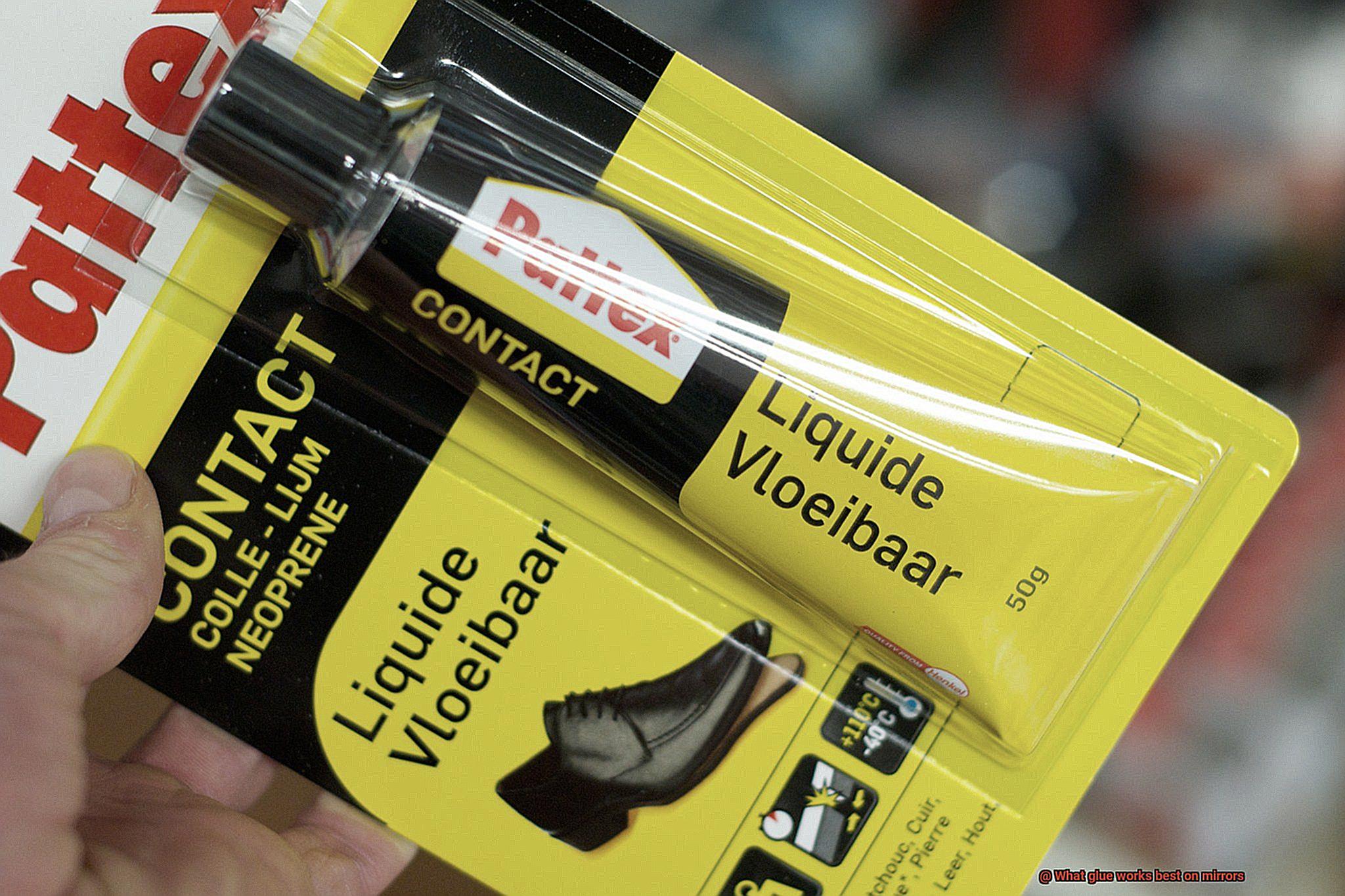
Steer clear of regular household glues like super glue or hot glue when it comes to mirrors. While suitable for other projects, they may not provide a secure enough bond and can potentially damage the mirror’s surface. Solvent-based adhesives should also be avoided, as they degrade the mirror’s reflective backing over time.
Proper Surface Preparation:
To guarantee a successful bond, thorough surface preparation is essential. Cleanse both the mirror’s surface and the area it will be glued to using rubbing alcohol or a glass cleaner. This step eliminates dirt, oils, and residues, promoting effective adhesion and preventing future issues.
Application and Curing:
When applying the chosen adhesive, adhere to the manufacturer’s instructions meticulously. Apply a thin and even layer of adhesive onto the mirror’s back or desired surface, avoiding excess glue that may mar appearance. Firmly press the mirror onto the surface and hold it in place for the recommended curing time. Afterward, assess the bond strength by gently tapping or shaking the mirror.
Advantages of Silicone-Based Adhesive
First and foremost, the flexibility of silicone-based adhesive is unparalleled. While other glues become brittle over time, silicone adhesive remains flexible, allowing for slight movements and vibrations without compromising the bond. Mirrors, particularly those in high-traffic areas or mounted on movable surfaces, often experience small shifts or vibrations. With silicone adhesive, you can rest assured that your mirror will stay firmly attached, no matter what.
But that’s not all. Silicone-based adhesive also boasts excellent resistance to moisture. Bathrooms and other areas with high humidity levels can wreak havoc on mirrors if they aren’t properly sealed. Luckily, silicone adhesive creates a watertight seal, preventing moisture from seeping in and causing damage to your precious mirror or its mounting surface. Say goodbye to unsightly water damage.
And let’s not forget about temperature resistance. Silicone adhesive can handle extreme temperatures without losing its adhesive properties or becoming damaged. This makes it perfect for mirrors installed in areas exposed to sunlight or near heat sources. While other glues might melt under pressure, silicone adhesive remains strong and reliable.
When it comes to application, silicone-based adhesive takes the cake. It comes in a convenient tube, making precise application a breeze – no extra tools required. Plus, it adheres effortlessly to various surfaces like glass, metal, wood, and plastic, making it versatile for all your mirror installation needs.
Silicone-based adhesive also offers excellent UV resistance. Mirrors placed outdoors or in direct sunlight are at risk of yellowing or discoloration over time due to harmful UV rays. But fear not. The UV resistance of silicone adhesive acts as a shield, protecting your mirror and preserving its pristine appearance.
Durability is another feather in the cap of silicone-based adhesive. Once properly applied, it maintains its strength for years on end, ensuring a reliable and secure bond between your mirror and its mounting surface. No more worrying about your mirror falling off or becoming loose over time.
Last but certainly not least, silicone-based adhesive demonstrates remarkable chemical resistance. It can withstand exposure to common household cleaners and chemicals without deteriorating or losing its adhesion properties. So go ahead, clean to your heart’s content – the bond will remain intact.
Mirror Mastic: The Professional Choice
Mirror mastic, the adhesive designed specifically for mirrors, is the go-to choice for professionals in the industry. When it comes to gluing mirrors, you need an adhesive that is strong, durable, and long-lasting. Let’s explore why mirror mastic is considered the professional choice.
- Secure bond: Mirror mastic creates a bond between the mirror and the surface that is unparalleled. Unlike other adhesives, mirror mastic provides a robust hold that can withstand the weight of the mirror without sagging or coming loose over time. This is especially critical for larger mirrors or those in high-traffic areas prone to bumps or jostling.
- Moisture resistance: Ordinary adhesives can deteriorate in environments with high humidity levels, but not mirror mastic. Its resistance to moisture ensures that your mirror remains securely in place, even in damp environments like bathrooms. No need to worry about your mirror losing its grip over time.
- Ease of use: Mirror mastic comes in a tube or cartridge form, making it easy to apply precisely without additional tools. Its thick consistency prevents drips or runs, resulting in a clean and tidy installation. No mess, just professional-grade performance.
To achieve the best results, follow the manufacturer’s instructions when using mirror mastic. Allow sufficient time for the adhesive to cure before it reaches its full strength. Clean both the back of the mirror and the surface it will be attached to before applying the adhesive for a proper bond.
Epoxy Adhesives: High Strength and Durability
Epoxy adhesives are the unsung heroes behind the secure placement of mirrors, even in steamy bathrooms or high humidity areas. The secret to their success lies in their exceptional strength and durability. So, what makes epoxy adhesives the go-to choice for bonding mirrors?
First and foremost, epoxy adhesives are a two-component system consisting of resin and hardener. When these components are combined, they undergo a chemical reaction that creates an extraordinarily strong bond. This bond ensures that your mirror remains securely in place, even when subjected to vibrations or regular handling.
But the benefits don’t stop there. Epoxy adhesives also possess excellent adhesive properties, allowing them to bond effectively with various materials, including glass and mirrors. Once applied, you can trust that the epoxy adhesive will cling tenaciously like glue.
Furthermore, epoxy adhesives exhibit remarkable resistance to moisture and temperature changes. This quality is particularly crucial when bonding mirrors, particularly in environments like bathrooms where humidity levels can soar. With epoxy adhesives, you can rest easy knowing that your mirror will not lose its grip or fall off due to moisture-related issues.
In addition to their moisture resistance, epoxy adhesives also offer exceptional resistance to chemicals. This means that even if you use cleaning agents or other substances near your mirror, the bond created by the epoxy adhesive will remain intact.
To ensure a strong and long-lasting bond between your mirror and its surface, it is essential to thoroughly clean both surfaces before applying the epoxy adhesive. This step guarantees the removal of any dirt, grease, or debris that could compromise the bond.
Once the epoxy adhesive is applied according to the manufacturer’s instructions, it is crucial to secure the mirror in place and allow sufficient curing time for the adhesive to fully set. The curing time can vary from a few hours to several days depending on the specific product used.
It’s important to note that some epoxy adhesives may have a slight yellowish tint when dried, which could affect the mirror’s appearance. To avoid this, choose a clear or transparent epoxy adhesive, particularly if aesthetics are important to you.
Considerations for Different Surfaces
When it comes to gluing mirrors, choosing the right adhesive for the surface is crucial for a strong and long-lasting bond. Different surfaces require different considerations, so let’s explore some key factors when attaching mirrors to various materials.
- Glass Surfaces: Since mirrors are typically made of glass, it’s essential to choose a glue specifically designed for bonding glass. Look for a transparent, waterproof adhesive that dries clear. Silicone-based adhesives are popular for their flexibility and strong adhesive strength.
- Wood Surfaces: When mounting a mirror onto wood, opt for an epoxy adhesive. Epoxy provides a robust bond and can withstand the weight of the mirror. Ensure the epoxy is suitable for porous and non-porous surfaces.
- Metal Surfaces: Gluing a mirror onto metal requires a metal adhesive like cyanoacrylate or epoxy-based adhesives. These options have excellent bonding properties and create a durable bond between the mirror and metal.
- Tiled Surfaces: For tile installations, choose a glue that adheres effectively to both glass and tile. Tile adhesives or mastic adhesives commonly used in construction projects provide a strong bond between these surfaces.
- Concrete Surfaces: Bonding mirrors to concrete demands a strong adhesive that can withstand weight and vibrations. Construction adhesives or epoxy-based options are often recommended for this purpose.

Regardless of the surface, prepare it properly before applying any adhesive. Ensure it is clean, dry, and free from dirt or debris. Roughening the surface with sandpaper can enhance the adhesive bond.
Always follow the manufacturer’s instructions when using any glue or adhesive. If unsure about which glue to use, consult a professional or seek advice from the manufacturer.
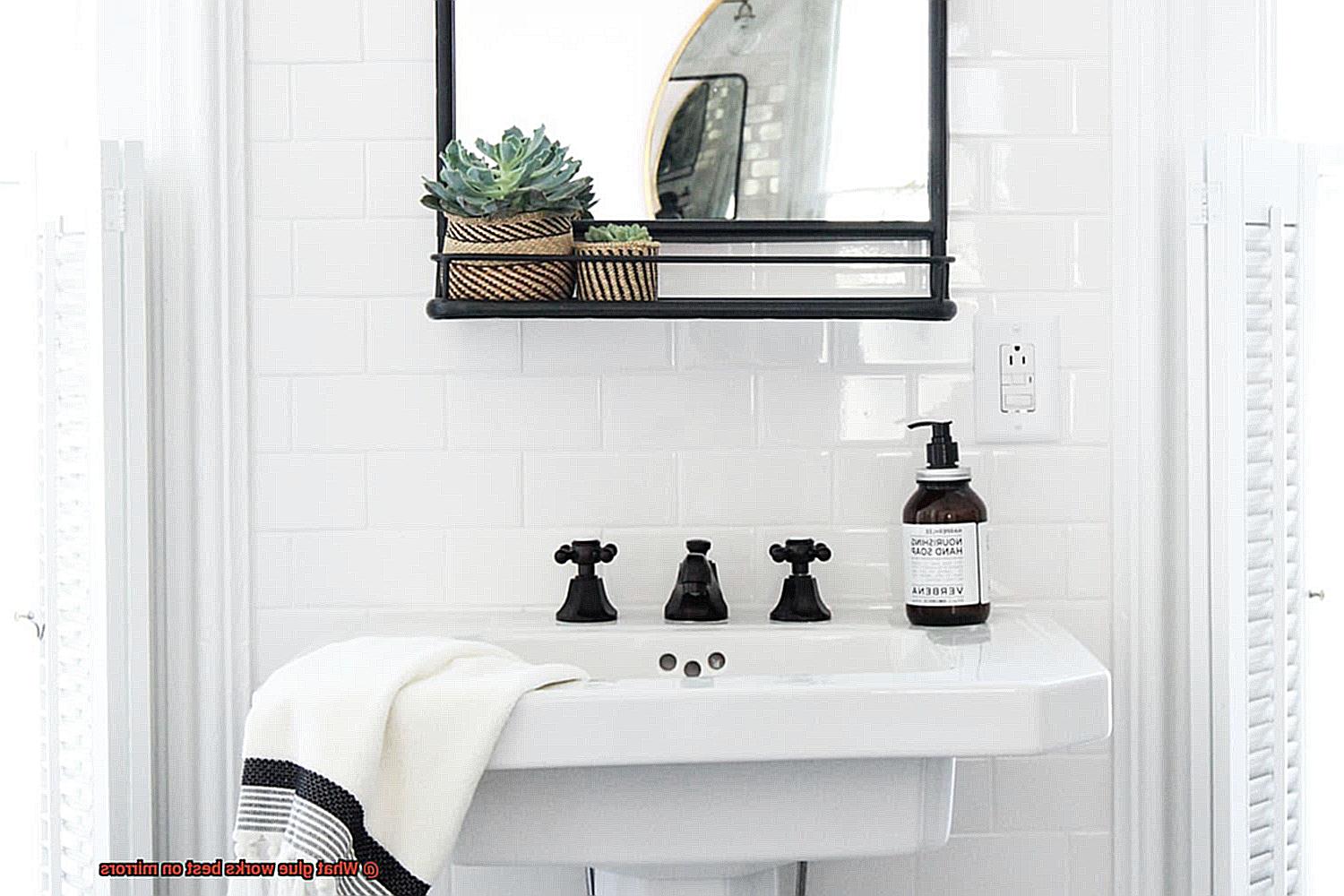
Cleaning the Surface Before Applying Glue
When it comes to DIY projects involving glue, one crucial step that is often overlooked is cleaning the surface before applying the adhesive. While it may seem like a mundane task, taking the time to properly clean the surface can make a significant difference in the strength and longevity of your bond. In this article, we will explore why cleaning the surface is essential and provide you with helpful tips to ensure a successful bonding experience.
Why is cleaning the surface important?
- Removing contaminants: Before applying any glue, it’s vital to eliminate any dirt, dust, or oils from the surface. These contaminants can act as barriers, preventing the glue from making direct contact with the surface and compromising the bond.
- Enhancing adhesive properties: By cleaning the surface, you create an optimal environment for the adhesive to bond effectively. A clean surface allows the glue to spread evenly and form a strong bond, ensuring its durability over time.
- Preventing future issues: Neglecting to clean the surface can lead to various problems down the road. Without proper cleaning, the glue may not adhere properly, resulting in weak bonds that can easily fail or cause damage to your project.
Tips for cleaning your surface:
Start by gently removing loose dirt and dust using a soft cloth or microfiber cloth. Avoid using abrasive materials that could scratch or damage the surface.
Create a mild cleaning solution by mixing dish soap with warm water. Harsh chemicals and abrasive cleaners should be avoided as they can harm certain surfaces.
Dip a cloth into the cleaning solution and gently wipe the surface in a circular motion. Pay extra attention to areas that are visibly dirty or stained.
For stubborn stains or residue, use isopropyl alcohol or white vinegar diluted with water. Apply the solution to a cloth and gently rub the affected area. Rinse with clean water afterward.
Ensure the surface is completely dry before applying the glue. Use a dry cloth to remove any remaining moisture, as even a small amount can compromise the bond.
Following Manufacturer’s Instructions for Application and Curing Times
In this comprehensive post, we will delve into the nitty-gritty details of why following the manufacturer’s instructions for application and curing times is absolutely crucial. So, let’s embark on this journey together and unlock the magic of glue.
Mastering the Art of Proper Application:
When it comes to gluing mirrors, careful attention must be paid to the specific instructions provided by the manufacturer. Different glues require different application methods for optimal adhesion and durability. Some may demand direct application onto the mirror surface, while others may require evenly spreading the glue on both the mirror and its future home. By adhering to these instructions, you guarantee that your mirror stays securely in place.
The Dance of Curing Times:
Curing time refers to the duration it takes for glue to fully dry and reach its maximum strength. It is absolutely vital to stick to the recommended curing times provided by the manufacturer. Rushing the process by applying pressure or moving the mirror prematurely can result in a weaker bond. Remember, patience is key when it comes to achieving a strong adhesive connection.
Elements That Influence Curing Times:
Curing times can vary depending on factors such as temperature, humidity, and the specific glue being used. Higher temperatures and lower humidity levels may expedite the curing process, while lower temperatures and higher humidity levels might prolong it. It’s crucial to consider these elements and create an environment that fosters optimal curing conditions.
Elevating Security with Additional Steps:
Certain glues may necessitate additional steps after application, such as clamping or supporting the mirror until it has fully cured. These extra measures are indispensable in ensuring that the mirror remains steadfastly attached. Taking the time to embrace these steps will provide you with added peace of mind, knowing that your mirror is well-supported.
Trusting the Manufacturer’s Wisdom:
Should any discrepancies arise between the manufacturer’s instructions and general guidelines, it is always wise to defer to the specific instructions provided with the glue product. The manufacturer’s recommendations are tailored for their particular product and are likely to yield the best results. Placing your trust in their expertise guarantees that your mirror will stay firmly in place for years to come.
Safety Precautions When Working with Adhesives
Adhesives are the unsung heroes of the DIY world, holding everything together from broken ceramics to craft projects and even reattaching that pesky rearview mirror. But before you embark on your next glue-fueled adventure, it’s crucial to prioritize safety precautions to prevent accidents and protect your health.
First and foremost, choose a well-ventilated area to work in. Adhesives often contain volatile organic compounds (VOCs) that release harmful fumes. These fumes can irritate your eyes, nose, and throat, and prolonged exposure may lead to more serious health issues. So crack open a window or turn on a fan to ensure proper airflow in your workspace.
Gear up with personal protective equipment (PPE). Gloves are essential in protecting your hands from direct contact with the adhesive, which can be difficult to remove and may cause skin irritation or burns. And don’t forget those safety goggles. They’ll shield your eyes from any adhesive splashes or accidental contact.
Always read and follow the instructions on the adhesive product label carefully. Different adhesives have specific safety guidelines and application methods. Understand the recommended drying time, curing time, and any other necessary precautions mentioned by the manufacturer. It’s better to be safe than sorry.
Keep adhesives out of reach of children and pets. Many adhesives are toxic if ingested, so store them securely away from food, drinks, and other household items. Let’s avoid any accidental glue mishaps.
Speaking of accidents, avoid smoking or open flames near adhesives. Some types of adhesives are highly flammable, including both liquid adhesives and aerosol sprays. Trust me, you don’t want to witness what happens when adhesive vapors meet a spark. It’s not a pretty sight.
Clean up spills immediately to prevent slips and falls. Adhesive spills create a slippery surface that can cause accidents if not cleaned promptly. So grab the appropriate cleaning materials recommended by the adhesive manufacturer and get to work.
Dispose of adhesive containers properly according to local regulations. Some adhesives may be considered hazardous waste and should not be thrown in regular trash. Check with your local waste management facility for guidelines on proper disposal. Let’s keep the environment safe too.
Lastly, remember to take breaks and rest your eyes and body when working with adhesives for an extended period. Prolonged exposure to adhesives and repetitive motions can cause eye strain, fatigue, or musculoskeletal issues. So stretch it out, take a breather, and give yourself some well-deserved rest.
iUYrXGCH0w4″ >
Conclusion
In conclusion, when it comes to finding the best glue for mirrors, there are a few options to consider.
One of the top choices is a high-quality adhesive specifically designed for glass and mirrors. These adhesives provide a strong bond and are resistant to moisture and temperature changes, ensuring that your mirror stays securely in place.
Another option is using silicone adhesive or sealant, which offers excellent flexibility and durability. It’s important to apply the adhesive carefully and evenly, following the manufacturer’s instructions for the best results.
Additionally, if you’re looking for a quick fix or temporary solution, double-sided mounting tape can also be effective for smaller mirrors. However, keep in mind that it may not provide as strong of a hold as other adhesives.
Ultimately, the best glue for mirrors depends on your specific needs and preferences.

